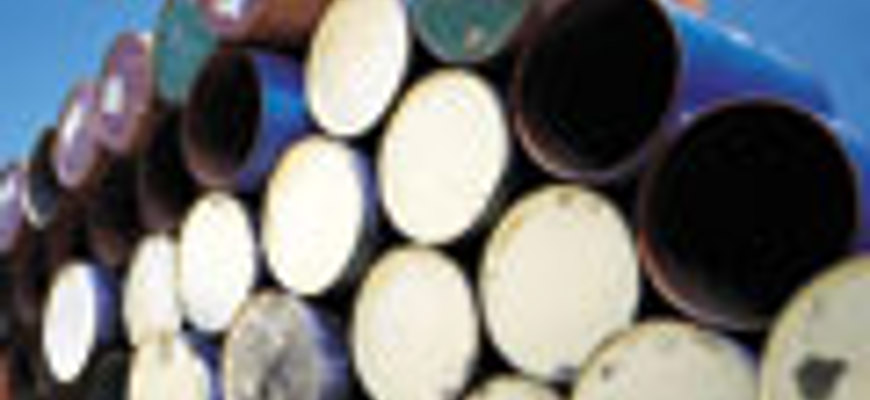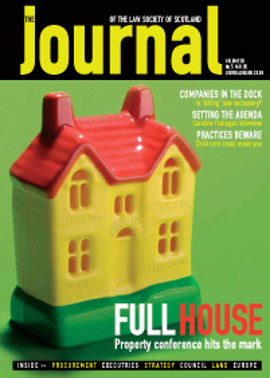What a waste!

The UK took a very long time to arrive at a coherent legal system to deal with the problem of contaminated land. That system is expressed in Part IIA of the Environmental Protection Act 1990, as amended by the Environment Act 1995 (“the Part IIA Regime”). Unfortunately, a case flowing from a problem with a petrol station in Belgium has thrown what was understood to be a coherent legal system into disarray.
The European Court of Justice gave judgment on 7 September 2004 in the case of Van de Walle v Texaco Belgium SA. Before this case the general understanding was that the law of waste was totally different from the law relating to contaminated land. What this decision has done is to apply the EU Framework Directive on Waste to contaminated land in a way that radically transforms our understanding of the legal position.
The case involved hydrocarbons (i.e. petrol and associated liquids) leaking from underground storage tanks at a filling station owned by Texaco in the Brussels region. When the hydrocarbons leaked from the underground tanks they contaminated soil and ground water. The Brussels region apparently does not have a specific legal regime for the remediation of contaminated land. The Belgian courts therefore sought to apply a domestic law designed to implement the Framework Directive in order to allocate liability and establish, in particular, whether Texaco should be liable in relation to the contamination.
The intricate details of Belgian law need not concern us. The vital issue for our purposes is that the Belgian courts referred to the European Court the question of whether the hydrocarbons which had leaked from the underground tanks, and indeed the soil which was then contaminated, were “waste” in terms of the Framework Directive.
The reason why this issue is vital to Scotland is that the Framework Directive also determines the definition of waste in Scots law, and a ruling as to what constitutes “waste” by the European Court of Justice in this case, referred to it from a Belgian court, will also determine the meaning of “waste” for the purposes of Scots law.
The definition includes “material spilled, lost or having undergone other mishap including any materials, equipment, etc contaminated as a result of the mishap”. The European Court ruled that the spilled hydrocarbons were waste and the soil contaminated by the hydrocarbons was also waste, even before that contaminated soil was excavated.
The UK framework
The impact of that decision in Scots law is widespread.
The Part IIA regime was reasonably well understood. “Contaminated land” was defined relatively narrowly with reference to the likelihood of harm or pollution of controlled waters. The duty to take remedial action was imposed on the “appropriate person”, i.e. the person who caused or knowingly permitted the substances which caused the property to be contaminated land to be in, on or under the land, whom failing the owner or occupier of the land. The regime then incorporated various exclusion tests which might exclude parties from liability in certain circumstances.
The Van de Walle decision means that we must now consider a very high proportion of what might otherwise be regarded as “contaminated land” in terms of the Part IIA regime as waste, and such waste is regulated in terms of sections 33 and 59 of the Environmental Protection Act 1990 (“EPA”) as explained in the box opposite.
Regime change
At the very least we now have an alternative and slightly less sophisticated contaminated land regime. That alternative regime becomes even more important when one considers the provisions of section 78YB(3) of EPA. That provides that if in a case falling within the provisions of section 59, the land in question is contaminated land or becomes such land by reason of the deposit of the controlled waste in question, a remediation notice under the Part IIA regime shall not be served in respect of that land.
There are also further consequences of the extension of our understanding of the definition of waste. Under section 34 of EPA it is the duty of any person who produces, keeps or has control of waste to take all reasonable measures applicable in the circumstances to (among other things) prevent the escape of the waste from his control. Breach of that duty is a criminal offence. In view of the Van de Walle decision, allowing soil and ground water contamination to migrate off-site may be a criminal offence if there is a failure to take reasonable precautions against such migration. In addition (as mentioned above), section 33 makes it an offence to keep or dispose of waste in or on any land except under and in accordance with a waste management licence, or to keep or dispose of waste in a manner that is likely to cause pollution of the environment or harm to human health. This case therefore means that anyone in control of land contaminated by accidental spills and leaks will be required to obtain a waste management licence. This is a far from easy task.
A delicate choice
The main impact of the Van de Walle decision is to cause confusion. It should be noted that I am not aware of any authority choosing (as yet) to use section 33 or section 34 in the way indicated above. There would appear to be little doubt, however, that many people on whom the authorities could otherwise serve a remediation notice in terms of Part IIA of the 1990 Act will be able to argue under section 78YB(3) that no such remediation notice should be served on them. Before anyone uses that argument, however, they would be wise to consider whether their position would be any better in terms of the regime provided by section 59 described above. What people require to do is analyse their choices. People who would be “appropriate persons” in terms of the Part IIA regime may wish to argue that the Part IIA regime should not apply if their situation would be more favourable in terms of the waste regime under section 59. The situation for authorities is more complex. Having spent a long time, possibly years, analysing a position in terms of the Part IIA regime they may now be faced with the need to re-analyse the situation in terms of the section 59 regime.
There are indications that the relevant authorities in Europe are already looking at carrying out reform of the definition of waste in order to remove contaminated land of the type described in Van de Walle from the definition of waste. It is likely that any such reform, if it does come, will take many years. In the meantime the law will remain uncertain and it will probably take a substantial number of decided cases for the legal position to be clarified.
Professor Kenneth C Ross, Bishops, Solicitors, Glasgow and University of Glasgow
Kenneth Ross is also the Convener of the Environmental Committee of the Law Society of Scotland.
THE WASTE MANAGEMENT REGIME
Section 33 of EPA, as amended, makes it an offence to (a) deposit, or knowingly cause or permit to be deposited, controlled waste in or on any land unless a waste management licence (“WML”) authorising the deposit is in force and the deposit is in accordance with the WML; (b) treat, keep or dispose of controlled waste, or knowingly cause or permit same, (i) in or on any land or (ii) by means of any mobile plant except under and in accordance with the WML; (c) treat, keep or dispose of controlled waste in any manner likely to cause environmental pollution or harm human health.
Section 59 EPA provides that if controlled waste is deposited in or on any land in contravention of section 33, a waste regulation or waste collection authority (i.e. SEPA or a local authority) may serve a notice on the occupier requiring either removal of the waste or specified steps with a view to eliminating or reducing the consequences of the deposit. There is a right of appeal to the sheriff who shall quash the requirement if satisfied that the appellant neither deposited nor knowingly caused or permitted deposit of the waste.
Section 59 further provides that if it appears to SEPA or a local authority that waste has been deposited in contravention of section 33(1), and that (a) in order to remove or prevent pollution, or harm to human health, it is necessary that the waste be forthwith removed or other steps taken to eliminate or reduce the consequences of the deposit; or (b) there is no occupier of the land; or (c) the occupier neither made nor knowingly permitted the deposit of the waste, the authority may remove the waste from the land and/or take other steps to eliminate or reduce the consequences of the deposit.
If the authority exercises those powers it shall be entitled to recover its costs, (i) in a case falling within (a) above, from the occupier of the land unless he proves that he neither made nor knowingly caused or permitted the deposit; and (ii) in any case from any person who deposited or knowingly caused or permitted the deposit of any of the waste, except such of the cost as the liable person shows was unnecessary.
In this issue
- Leaving on a high
- The JAB: why it isn't working
- One house, many rooms
- Bad company
- Tender and true
- Beware the pitfalls
- Alien investors in the US
- Budgeting and beyond
- Let's play tag
- Same old story
- Getting the message across
- Council life
- Should the party pay?
- Unintended effects?
- A fine Profile
- Public benefit?
- The appeal of leave
- When is a cost not an expense?
- Website reviews
- Book reviews
- What a waste!
- How safe are your titles?






